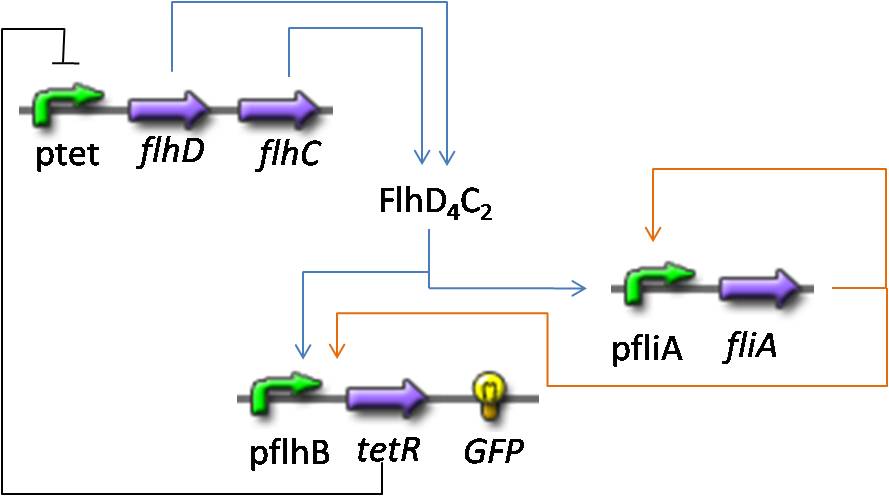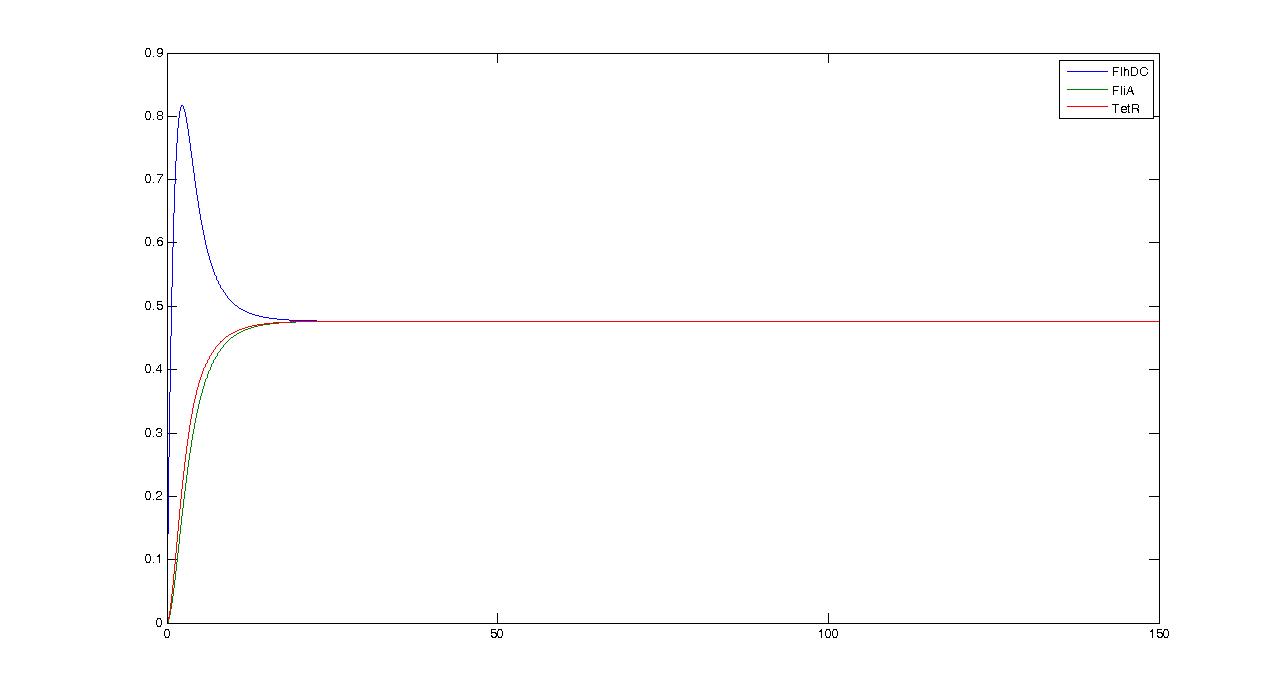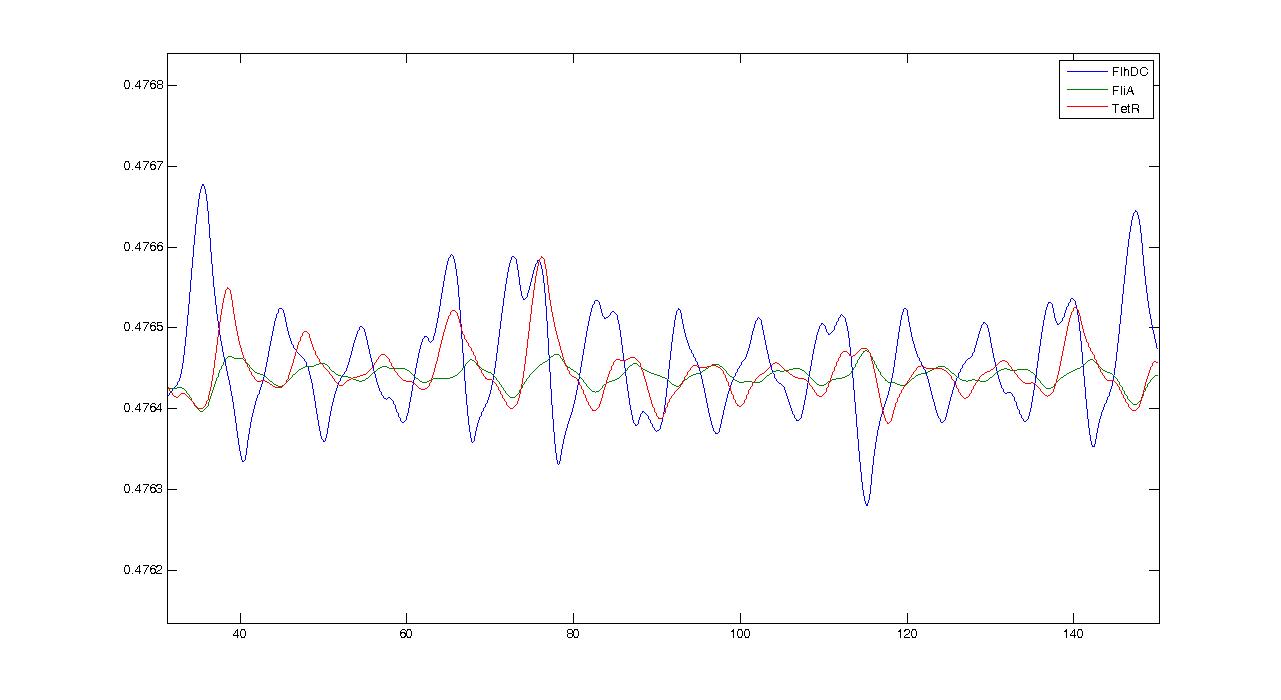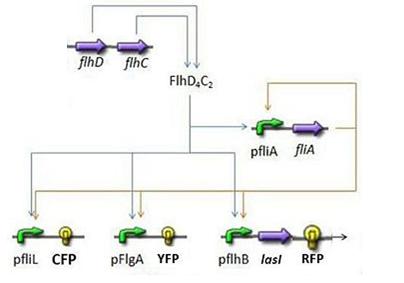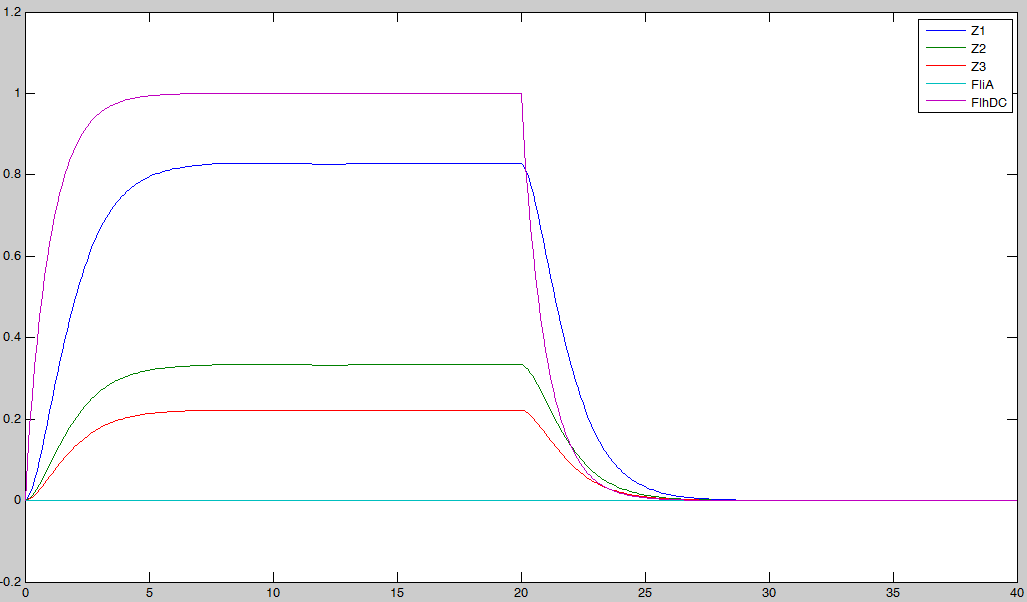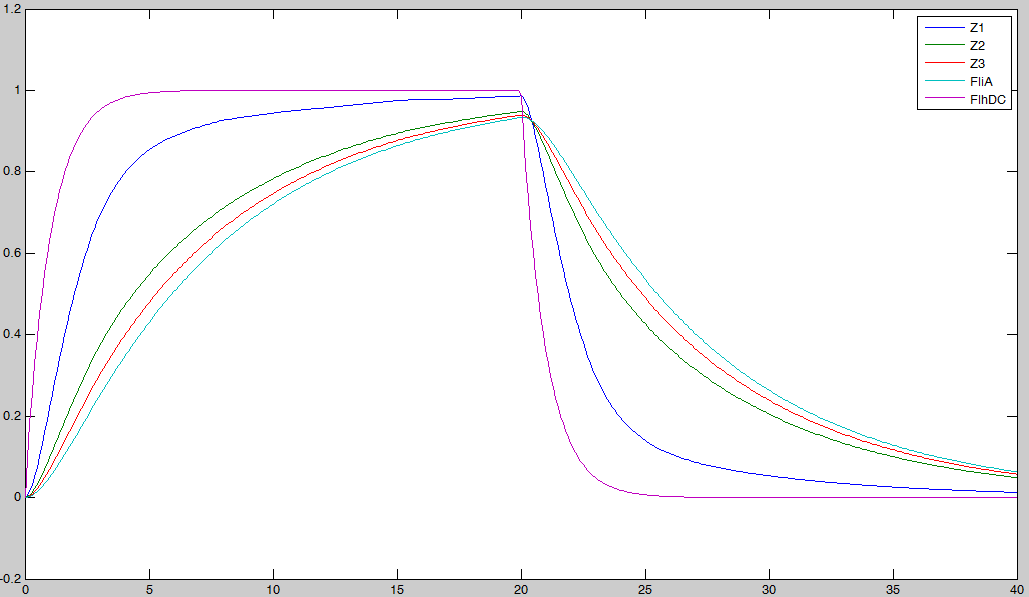Team:Paris/Modeling/BOB/Simulations page travail
From 2008.igem.org
(Difference between revisions)
(→Reaction and directions for the wet-lab) |
(→Oscillations) |
||
| Line 57: | Line 57: | ||
=== Using these elements to improve the system and give directions to the wet-lab === | === Using these elements to improve the system and give directions to the wet-lab === | ||
| + | |||
| + | == Entire System == | ||
| + | //biocham ici//+ comparaison avec le modele hillistique | ||
| + | |||
| + | = FIFO = | ||
| + | * The goal here is to present the results of the simulations we made concerning the FIFO part of the system. | ||
| + | Here is the system we implementated using Matlab (see the [[Team:Paris/Modeling/BOB/Simulations/Codes#FIFO|corresponding codes]]) | ||
| + | [[Image:Subsystem1.jpg|center]] | ||
| + | and the corresponding equations (for more detailed information see our [[Team:Paris/Modeling/BOB#First_Subsystem|establishment of the model]]). | ||
| + | [[Image:FliA_dynamics.jpg|center]] | ||
| + | [[Image:CFP.jpg|center]] | ||
| + | [[Image:YFP.jpg|center]] | ||
| + | [[Image:RFP.jpg|center]] | ||
| + | where CFP, YFP, and RFP will be denoted below as respectively Z1,Z2 and Z3. | ||
| + | * We wanted to see if our predictions were accurate or not. We then solved the equations, forcing the behavior of FhlDC. In a first step, we imposed a constant production term of 1. Then, at a certain time, we set this production term to zero : | ||
| + | [[Image:FlhDC_Test_FIFO_cresc.jpg|center]] | ||
| + | [[Image:FlhDC_Test_FIFO_decresc.jpg|center]] | ||
| + | In fact we assumed that this behavior for FlhDC was acceptable regarding its estimated behavior in the whole system. | ||
| + | * We saw [[Team:Paris/Modeling/BOB#Which_gene_goes_were?|previously]] that without FliA, the FIFO would presumably not work. We then simulated a first system, where [FliA] stays to zero value.<br> | ||
| + | [[Image:essai_without_fliA.jpg|800px|center]]<br> | ||
| + | We may see that there is a LIFO behavior rather than the FIFO we expect... | ||
| + | * Then, we simulated the entire system, to check if we had | ||
| + | ** the lasting burst due to FliA (more important for Z3 than for Z2, and more important for Z2 than Z1) in the increasing phase. | ||
| + | ** the effect of fliA which maintained the concentrations to their maximum (more important for Z3 than for Z2, and more important for Z2 than Z1) in the decreasing phase.<br> | ||
| + | [[Image:essai_with_fliA.jpg|800px|center]]<br> | ||
| + | * We observe on these plots that the behavior is quite the one we expected, and that the FIFO is realized. FliA enables the curves to cross, and adds a delay on the genes that are most affected, with gives a better observability of the FIFO behavior. | ||
| + | |||
| + | = Synchronization = | ||
| + | == Mathematical Analysis == | ||
| + | == Simulations and verification of the hypothesis == | ||
Revision as of 22:40, 6 October 2008
|
(Under Construction : synchronisation and whole system)
Simulations and Mathematical analysis
OscillationsShort System
Observations
By looking at this simulation, we could think that it is going to be hard to get oscillations... However when we zoom, we get this more reassuring view : Understanding the dynamicsUsing these elements to improve the system and give directions to the wet-labEntire System//biocham ici//+ comparaison avec le modele hillistique FIFO
Here is the system we implementated using Matlab (see the corresponding codes) and the corresponding equations (for more detailed information see our establishment of the model). where CFP, YFP, and RFP will be denoted below as respectively Z1,Z2 and Z3.
In fact we assumed that this behavior for FlhDC was acceptable regarding its estimated behavior in the whole system.
We may see that there is a LIFO behavior rather than the FIFO we expect...
SynchronizationMathematical AnalysisSimulations and verification of the hypothesis |
|||||||||||||||||||
 "
"

